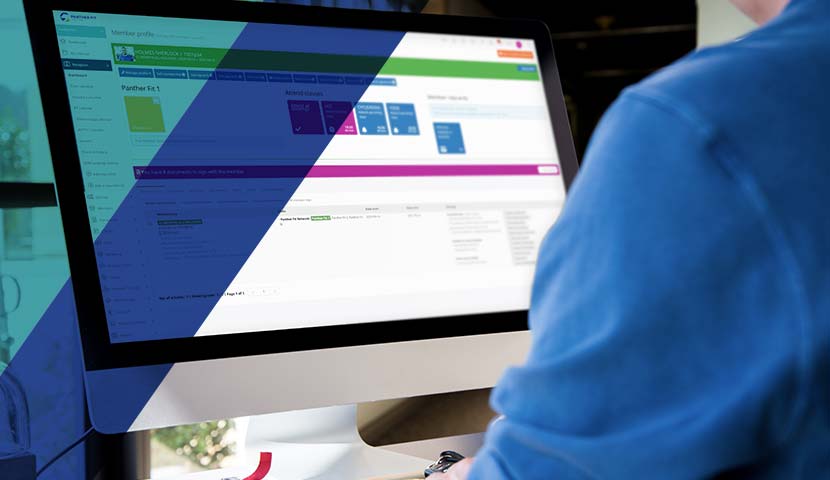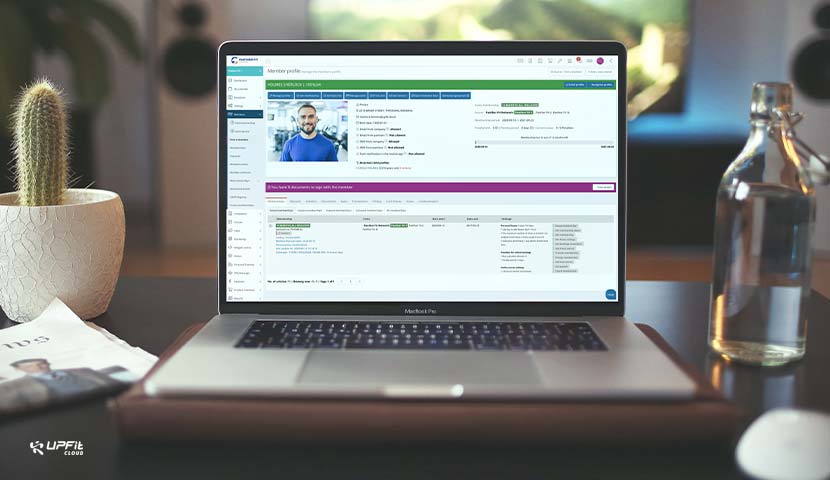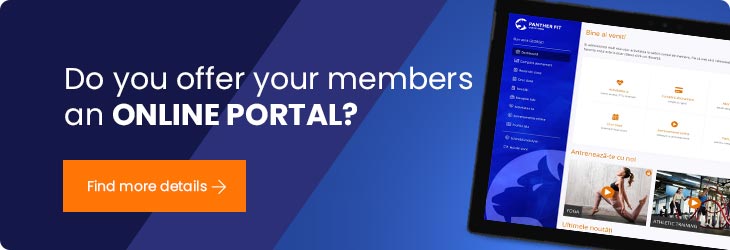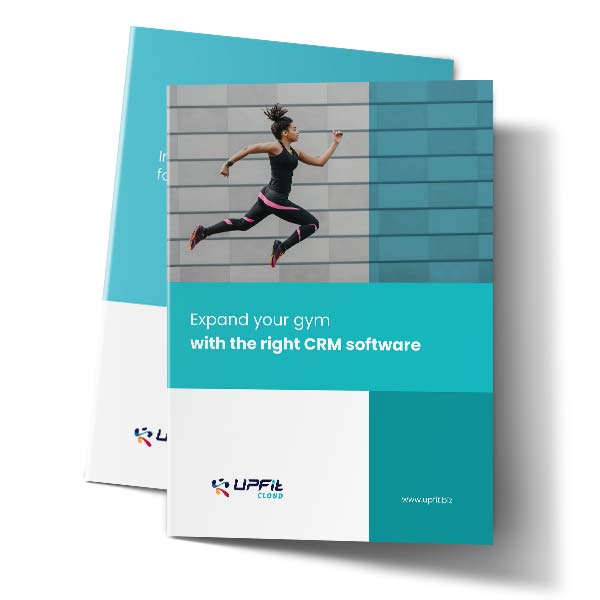What information should a member profile have, in your gym management software

The correct management of memberships is one of the most crucial aspects of a fitness club since this is the primary revenue of such a business. Unfortunately, most fitness operators tend to focus on a list of memberships sold rather than on those who bought those memberships.
In the medium and long term, it's much more important to have an overview of the individuals that bought memberships (members) rather than the number of memberships sold.
Correct and efficient management of members helps the reception desk perform their responsibilities better, helps sales reps increase sales volume without significant investments, and helps operators and owners keep track of the business's evolution and make the right decisions.
Therefore, when it comes to easy gym management, you must have a detailed database with all your club members, including those who are no longer active or those who only used test memberships. Of course, you can manage such a database in various ways. Still, the easiest and most efficient is to use dedicated software that untangles your database and quickly provides all the information you need.
Truly useful gym management software systemizes your member database based on unique profiles that display all the details about each member. Therefore, you have all the data you need in one place, and you don't have to look in several sections to find a piece of information.
Ideally, these profiles should be unique for each member. The system should not allow creating more than one member profile with the same phone number or email address. That way, you ensure each individual has one member profile with all the details about them.
Each management software has its own way of gathering and displaying this information. Most offer the minimum of details, one way or another. Still, it's crucial to make sure the platform you choose shows you precisely what you need as fast as possible. If you don't already know what information you would need on your members, here is a list of essential details that any member profile should have.
Full name and contact info
I know it's pretty evident that you should have every member's full name and contact details. Still, you'd be surprised how many programs don't allow saving all these details. The full name is essential, so your staff knows how to address the member. To correctly identify the member profile, you'll need their email address and phone number – as a unique identifier.
My advice is to collect the email address because they are more helpful in communicating with members. For example, it's easier to send an email to an address list when you want to let members know you are changing something than calling each member on the phone.
Other personal details usually collected are the date of birth to confirm the member's age. This detail is also practical when segmenting your audience for promotions, newsletters, or other communication channels.
No matter what personal details you decide to collect, it's crucial to use them following the GDPR or other data protection laws enforced in your country.
You should also make sure the information you collect is necessary. For instance, you probably don't need the members' physical addresses since I assume you don't intend to send them mail. You also don't need the member's ID number, so you should not scan or copy any ID form. You will just overload your database. If there is a security breach, sensitive personal information might be leaked, which will get you in trouble.
Therefore, make a list of the personal data you need from your members, and try to make it as short as possible. Also, the registration process will go a lot faster if you don't have to fill in enormous forms.
Profile photo
This detail is often overlooked because many operators think it's not necessary. But let's think of this scenario:
A member buys a full-time membership at your gym. You already have several hundred members, so it's not easy for your staff to remember every member. Suppose the only personal information you have on the new member is their name, email address, and physical address. How can you confirm that the person checking in is the person that bought the membership and not one of their friends? Someone just needs to know these details and have the member card on them, and your staff will let them in without knowing it's not the right person.
If you think this won't affect you, you should know these practices mean lost revenue for your club.
However, if you take a profile photo of all members when they purchase a membership, your staff can quickly identify the person checking in just by looking at the picture. You can do this with a webcam and save the image in the member profile.
There are other ways to confirm a member's identity, but none is as simple and fast. For example, you can ask members to show their IDs evetime they visit the gym, but what happens if they don't have them? Will you refuse access? Moreover, this process would add several minutes to the check-in process, which should be as swift as possible.
You could use biometric scanning, but that is an expensive solution, and not all members might be inclined to share that kind of data with you.
Membership status
Of course, the member profile should display the membership status in a very simple way. That means it shows the membership type, the locations where it provides access, if it's a fitness chain, and the benefits included.
It's also crucial for the system to display the membership's expiration date and how many days it has left.
These details are essential, mainly when our staff checks a member in, and they should be easily visible. A smart management system will validate the member's access so that your staff won't have to check the membership in detail.
When you scan the member card, the system shows you if the member has access or not, without checking the expiration date or the membership details.

Additional services
You should have access to all additional services that said member bought in the same member profile. That could be PT or massage sessions, guest passes, SPA sessions, and more. As I said before, it's imperative to have all the information about your members in one place, including additional services.
You should also easily access the availability period of these sessions and any other relevant details.
This is particularly useful when a member wants to schedule. Session when they check in. You won't have to look in another software section or a different program. Instead, you can perform all the necessary operations from the member profile.
Complete activity
Details about the members' activities, such as each check-in, booked classes, canceled bookings, or attended classes, is valuable information for any operator. However, they are often forgotten. Yet, all these details can forge a map of your members' preferences and habits, which will help you make the best commercial decisions for your business.
You can create scenarios to improve the member experience based on all this data. For example, you can quickly identify who is about to drop out and who is willing to buy more services. This information is very useful for you and your sales team, so why wouldn't you collect it?
Therefore, make sure your member profile includes a complete history of every gym visit, including its date and time and the staff that checked the member in.
You should also save all the member's bookings, including those canceled. Based on this, you can recommend similar classes, and if the member doesn't use their membership constantly, you know to contact them and get them to show up. Otherwise, they won't renew.
This is also useful if you have an incident at the gym. You'll know exactly which member was in the club at that time.
Member documents
You should have a member contract for each membership or service you sell to avoid legal issues. Usually, these documents should be generated automatically by the management system. Some platforms also have digital signature solutions integrated. All these documents should be archived electronically and included in the member profile.
The same goes for invoices and any other agreement or document signed by them. All documents issued for a member must be easily accessed from that member's profile. Usually, a contract or invoice is searched for using the person's name, not the document number. If all of them are in the member profile, you can find them very quickly.
Transaction history
Another essential piece of data for your club is a complete transaction history for every member. This is particularly useful when members have a question or think there was a problem with their payments. Then you can quickly look for invoices and receipts in their member profile instead of a section with all these documents.
Related member profiles
Do you organize group classes for kids? That's great! Surely kids don't always have their own email addresses or phone numbers, so you must save the contact information of their parents or legal guardians. But, if that parent already has a membership at your gym, you won't be able to use the same contact information twice.
The easiest way to solve this issue is to have dedicated child profiles connected to the parent's profile. That way, your staff won't need minutes on end to find a child's guardian in the database. In addition, kids under a certain age are usually not legally allowed to purchase services because they cannot sign a contract. That means the parent makes that purchase and signs the contract in the child's name. Therefore, the child uses the membership bought by the parent, which is easier to manage if both profiles are connected in your management software.
This feature is also useful when you run referral campaigns. For example, if a member brought a friend that ended up buying a membership, and you want to repay the member, it would be helpful to know which new client they brought in.
Notes, comments, and additional information
I'm sure your staff at the reception desk usually leave each other messages and reminders concerning certain members. For example, if they left with a locker key, if they forgot to pay for a product at the front desk, if they haven't signed their contract, or if it's a VIP member that gets additional perks.
These details are essential and usually end up on post-it notes that can easily be lost and are definitely not archived.
A more straightforward way to deal with these issues is to write them in the member profile. Comments and to-do lists can be very useful for your staff, mainly if they are saved in the member profile and archived when no longer needed.
A detailed history that cannot be erased
Your member database contains loads of personal details usually protected by data-protection laws. They are also the "bread and butter" of your gym. That is why it's vital to protect this information, particularly when you have a large team. Therefore, the member profile should have a detailed history of all changes performed on it.
Whether we are talking about changing the name or email address, selling a membership, changing a class booking, and so on, all this data must be recorded and saved indefinitely. That includes the user that performed that change, when they did it, and what exactly they changed.
Your software should NOT provide the option to delete or erase a profile or a membership. That way, there is no way that an employee can delete a profile by mistake and lose important information.
With a complete history of members' previous memberships and services, visits, transactions, and classes, you can quickly adapt your promotions to their liking. Then you can easily persuade them to renew their membership and buy additional services because you already know what they like.
A quick catch-up...
Though many fitness clubs prefer managing their membership list, it's more useful to have a database with members, not just memberships sold. That way, you have a clear picture of your business. In addition, you can identify which members are in danger of dropping out or not renewing.
The easiest way to organize your database is by having a dedicated profile for each one of your members. Truly useful management software will allow you to create a unique member profile, where you can register all the information you need on that individual.
That means not just their name and contact information but also all the services and memberships they ever bought, details on every visit, and class they attended.
The member profile should contain all the documents generated for that member, like contracts and invoices, the entire transaction history, member profiles connected to them, like children or referrals, and notes and comments on that member. And most importantly, the member photo, so your staff can easily confirm their identity and avoid fraud.
Most management software created especially for gyms and fitness clubs will allow you to create member profiles with various information. Therefore, when you choose new software for your gym, you should check what kind of information you can register. Also, pay attention to how you can manage this information. If it can be erased, if there is a detailed history of all changes made by users, and if it obeys your country's data protection laws.
Are you struggling to increase the number of new members joining your fitness center?
There is an easier way to get more members! Communicate efficiently with them through automated emails, provide them the option to purchase memberships online, delight them with a professional mobile app and member account, and surprise them with fast services at the reception desk.
With UPfit.cloud, everything is done quickly, and you can start seeing results in a matter of days. Find out the advantages of our platform in a 20-minute demo session.
REQUEST A DEMO
We also recommend...
How to start a newsletter for your gym’s members
Since few fitness clubs use the newsletter as a marketing method, it is also a great way to distinguish your brand from the rest of the competition. All the while providing members and potential customers with helpful content.
Read MoreWhat does the 'Become a member' button mean and how can you use it to attract more members, without any headaches?
You've certainly seen that more and more fitness centers have a button or picture on their website that says Become a Member. Theoretically, that button leads to a section on the site where you can... become a member of that particular fitness center
Read MoreWhat is customer care in fitness, and how to care for your members
An incredible member experience will encourage them to visit your gym more and more and, of course, to constantly renew their membership. You don’t have to invest considerable amounts in equipment and gadgets. If your staff makes sure members are always happy at your club, your retention rate will surely increase on its own.
Read MoreFree guides for your gym
We have created a series of free guides that will help expand your gym: advice on increasing sales, lead management, optimising your online marketing strategy, creating a corporate program, and so much more. There are dozens of e-books and guides with useful information and ideas for ambitious gyms, that are willing to use all the tools available to grow their business and recruit more members.
Software that perfectly adapts to your gym's activity
Each gym is unique. That is why UPfit.cloud has a wide range of services, tools, and features that perfectly match your business.
Regardless of how you manage your gym or fitness club activity, UPfit.cloud can be customized so it's easy to use for your team and simple for your members.

Aerobic studio
Discover the benefits
Fitness center
Discover the benefits
Pilates studio
Discover the benefits
Yoga studio
Discover the benefits






















